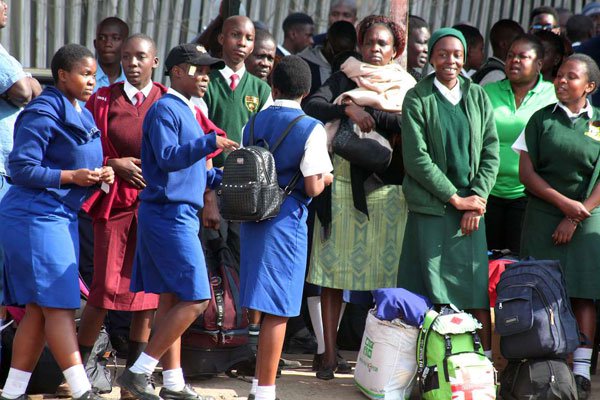By Amanda Benigni
The fact that technological innovations are disrupting traditional business models and digital technologies will continue to transform the economic marketplace is hardly breaking news to members of West Virginia’s business community. Higher education is no exception.
Across the nation, online education, or distance education, is rapidly growing in popularity. According to the “Almanac of Higher Education,” which is published annually by the Chronicle of Higher Education, “Nearly 29 percent of students were enrolled in distance education courses, either in part or exclusively, in the fall of 2014.”
Today’s college students are turning to distance education in search of flexibility and convenience. Here in the Mountain State, West Virginia Junior College (WVJC) is not just accommodating that demand but also offering a different type of online learning experience. What is unique about the online learning experience at WVJC is that in an environment where technology creates barriers to interaction, WVJC infuses the human element back into the student experience. The faculty, staff and administration have adopted an approach that is based on a foundation of personal and meaningful relationships.
“The secret to a successful online program is not what you might think,” says Chad Callen, campus president of WVJC. “While technology is important, it’s nothing without the people behind it that make it work. A successful online program requires people who understand how to connect and build relationships with other people. Only from these relationships can trust be developed, and from that trust between the student and your people that work in tandem as a single unit, greatness can be accomplished.”
Online education by definition separates the instructor and the student by distance. However, WVJC is committed to putting human engagement back into distance education while still maintaining the in-demand benefits of online education. According to Brittany Nuzzo, academic dean at WVJC, the secret to effectiveness in online education is not just the content and effective delivery of that content through technology but rather the humanization of the online learning experience. “When we constructed our Online Division, we wanted to put the user at the forefront,” she says. “We wanted to humanize distance education.”
WVJC has been able to develop meaningful relationships with students in a variety of ways. Before an online course even begins, a student at WVJC receives a personal phone call from their instructor welcoming them to the class.
“It’s an expectation of our faculty that students have a direct line of access to their instructors,” says Nuzzo. “We also expect our instructors to respond to emails, voicemails and other student inquires within 24 hours, although it is usually much sooner.”
The faculty are also expected to provide timely feedback on student work. In both online and on site courses, students can expect to receive formal, written feedback within 48 hours of submission. Nuzzo knows firsthand the importance of reaching out to students early and responding to their concerns quickly. As academic dean, she makes a point to personally contact each new student at WVJC during their first term. Additionally, she meets with them regularly throughout the year to discuss their progress. As students are quickly made aware, at WVJC, the academic dean, program directors, instructors and support staff are all readily available by phone to offer guidance and feedback.
“Our students have access to their instructors 24 hours a day, seven days a week,” explains Nuzzo. “From the time they enroll to the time they matriculate and enter the workforce, we are there to provide them with support and encouragement.”
Nuzzo has personally taken phone calls from students on Christmas Day and knows that other instructors and administrators have done the same for students whose situations were especially urgent.
When a tech-related issue arises at WVJC’s online campus, it is often Ryan Langley, the director of instructional design and technology, or one of his internal staff who fields the call. In an attempt to ensure adequate response times, WVJC has a third-party service available to its students 24/7. However, WVJC prefers tech issues be handled by its internal staff because of the humanized element they add.
“I take a lot of calls outside of business hours,” says Langley. “I trouble shoot students’ technical issues, help fix their computers and internet connections and do my best to quickly and effectively address any other technical issues they might experience while enrolled in our online courses. We even fix viruses and install virus protection software for our students.”
Langley has personally answered phone calls from students in the middle of the night, as have other members of the faculty and staff. “If students are experiencing a hiccup in their progression through their degree program and that hiccup is tech related, we are going to do everything we can to resolve it, even when it’s outside the realm of service a technical support team would normally provide,” he says.
Langley believes technological advancements will help ensure more students gain access to higher education. “We create a lot of opportunities for a lot of people who otherwise might not be able to attend a college or further their education,” he says. “Many of our students work all day. They have to support their families. They cannot take time away from their responsibilities at work and at home to spend all day in a classroom. That’s something I take a lot of pride in. We give students the opportunity to accomplish things they would not be able to accomplish elsewhere, and we’re using technology to do it.”
Nuzzo also recognizes that many of her students, particularly those who are first-generation or nontraditional college students, require extra support to achieve their academic goals. “We are side by side with our students through not only this academic journey but through all of their life pursuits,” she says. “We have seen our students in their darkest hours and their moments of triumph. We have laughed with our students, cried with our students and rejoiced when they have accomplished so much on nothing but perseverance.”
Langley and Nuzzo are both humbled by seeing their students’ accomplishments. “It reminds me daily of why I entered education,” says Nuzzo.
WVJC students are appreciative of the support people like Nuzzo provide.
“WVJC online was a wonderful experience for me,” says Michelle Kornegay, a 2015 graduate of WVJC’s medical assisting program. While attending, Kornegay experienced some family-related issues that could easily have prevented her from achieving the goal she set out to accomplish, but she says the faculty and staff at WVJC were dedicated to her success. “They would not let me quit my journey. They pushed and encouraged me, even when I did not have confidence in myself. It’s because of them I earned my degree,” she says.
While WVJC prides itself on the personal relationships faculty, staff and administrators form with students, just as crucial, it seems, is the relationship students form with the institution itself. According to Callen, it is vital that students feel connected to WVJC on a personal and professional level.
“We accomplish this in several ways,” says Callen. “We often feature our students on our social media when they pass certification exams or get hired into a career they love. One of the most unique methods though is through our random gift mailings. At random times throughout the year we will mail—not email, but traditional snail mail—little mementos to let the students know we are thinking about them and encouraging them and that they are part of a larger family.”
At various points throughout the year, a student at WVJC can expect a Christmas ornament, student survival packet, handwritten note containing words of encouragement or car decal.
Education is, in essence, about human relationships, regardless of how much technology is infused into it. WVJC believes cultivating human relationships is central to the success of an online program. If the school’s online education programs are any indication, the key to maintaining effectiveness in the future will be how institutions of higher education are able to maintain and maximize those relationships as technology disrupts the environment in which those relationships are nurtured.
 About the Author
About the Author
Dr. Amanda. Benigni holds a Ph.D. in literature and criticism and is currently pursuing teaching certification in secondary English education. A resident of Morgantown, WV, Benigni teaches introductory-level composition and literature courses at various institutions of higher education, both in person and online.












 Users Today : 90
Users Today : 90 Total Users : 35459996
Total Users : 35459996 Views Today : 126
Views Today : 126 Total views : 3418591
Total views : 3418591